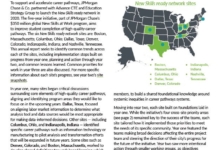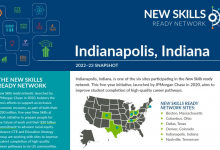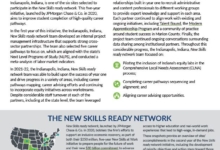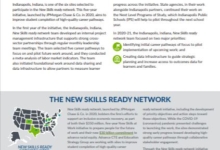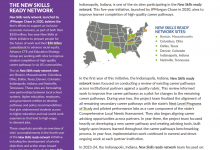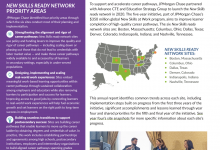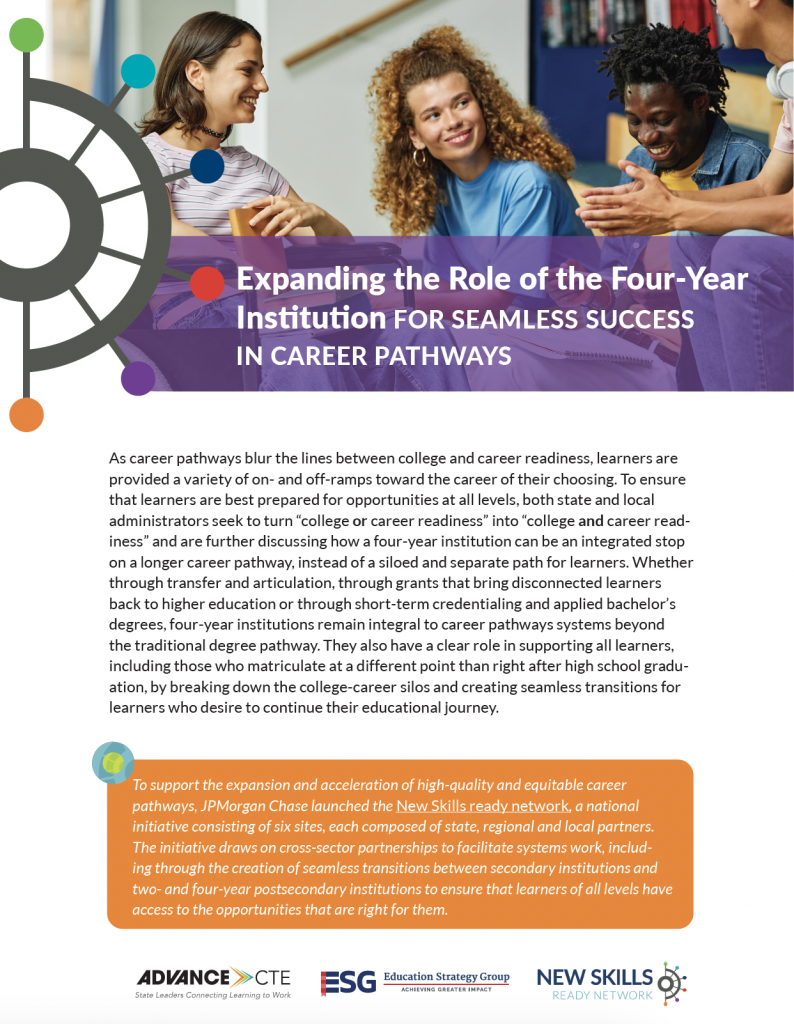Whether through transfer and articulation, through grants that bring disconnected learners back to higher education or through short-term credentialing and applied bachelor’s degrees, four-year institutions remain integral to career pathways systems beyond the traditional degree pathway. They also have a clear role in supporting all learners, including those who matriculate at a different point than right after high school graduation, by breaking down the college-career silos and creating seamless transitions for learners who desire to continue their educational journey.
This brief highlights:
- the challenges facing postsecondary administrators in facilitating seamless transitions between institutions;
- three major categories of strategies used at both the state and local levels to overcome those challenges and ensure that learners can seamlessly transition between and across institutions;
- state and local examples of successful policies and initiatives that support these learners;
- and policy and institutional recommendations for engaging partners and policymakers for further integrating four-year institutions in career pathways.
This resource was developed through JPMorgan Chase & Co.’s New Skills ready network, a partnership of Advance CTE and Education Strategy Group. The New Skills ready network bolsters JPMorgan Chase’s efforts to support a robust economic recovery, as part of their $350 million, five-year New Skills at Work initiative to prepare people for the future of work.

